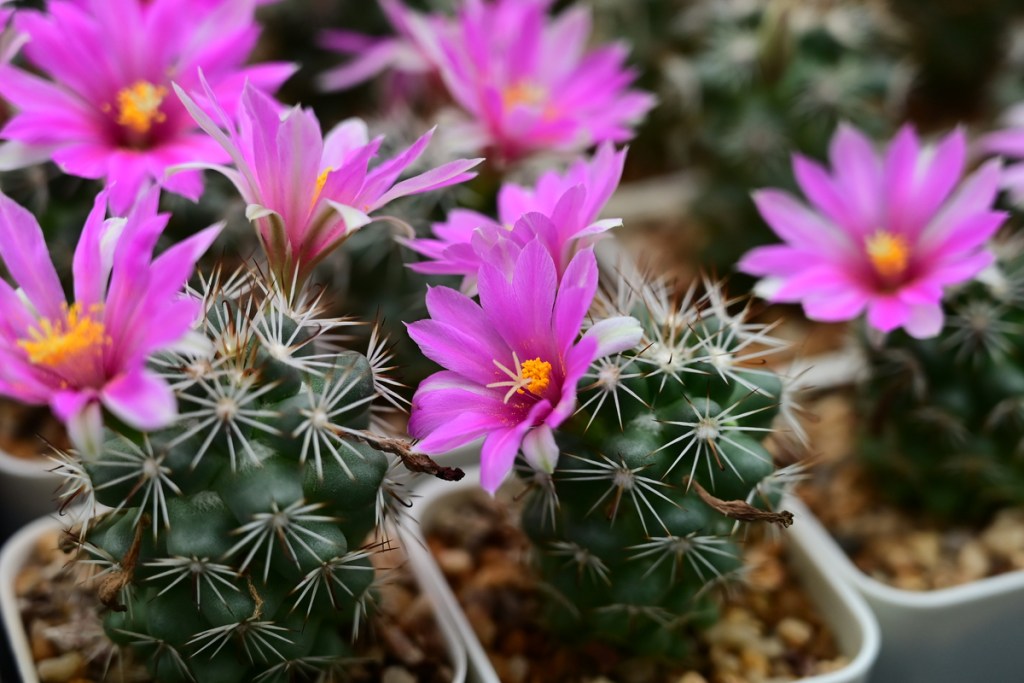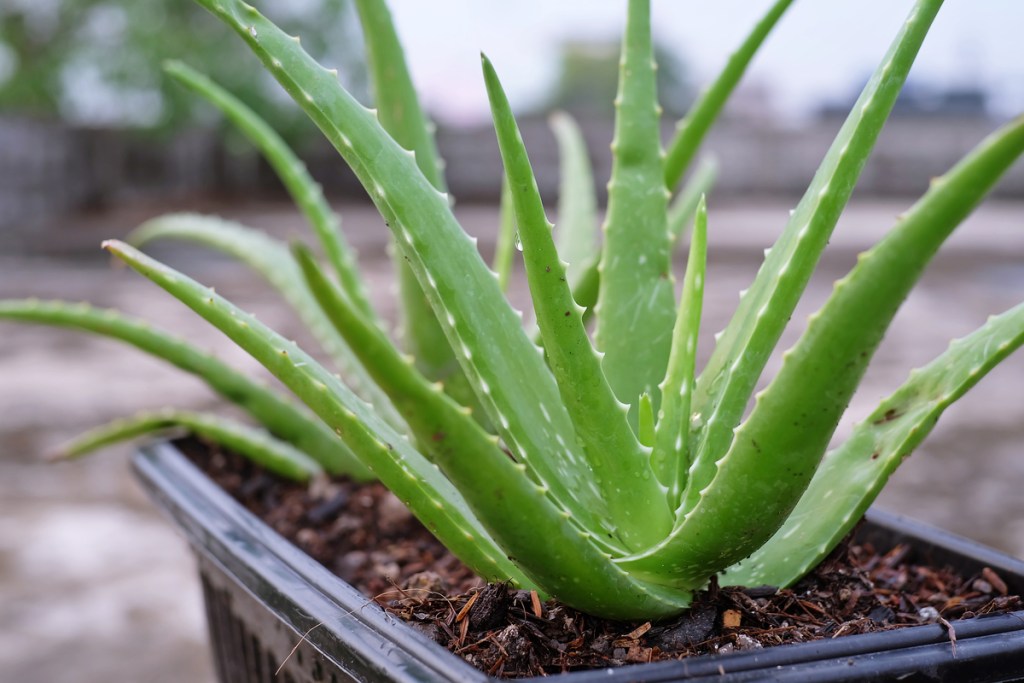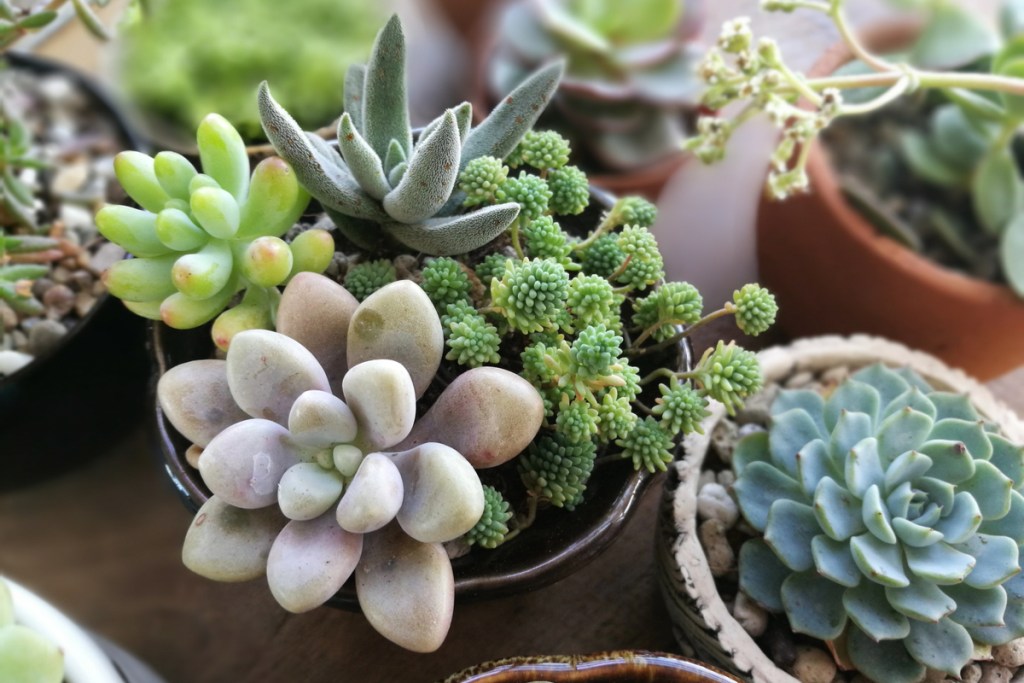Not every plant is well suited for every location, and if you live in a hot, sunny, dry region, then you may have learned that the hard way. In addition to the cacti and shrubs that can grow in these conditions, there are also succulents. These types of plants are popular for their low-maintenance and relatively small size, but succulents present other benefits as well. They make an excellent choice for living walls, and they come in a wide range of shapes and colors that fit well with most landscapes. Here’s what you need to know about how to make a succulent garden.
What is a succulent?
Succulents are a category made up of many plants in a wide range of species, families, and orders. The category is defined by thick, fleshy leaves or stems used for storing water. Since they’re characterized by this ability to store water, succulents are drought-tolerant plants. Most succulents are native to Africa and Central, South, and North America.
If you think succulents sound a lot like cacti, you’re right! Most cacti are also succulents, but cacti make up only a small portion of succulents. Cacti are plants in the Cacatae family, which is one of the many families that fall into the category of succulents. However, you may have noticed not all cacti are labeled as succulents in stores or nurseries. Cacti that are larger or have pronounced spines are often not referred to as succulents. This is mostly due to perception and not any true botanical differences.

Which succulents should you plant?
Agave
Agave is a popular outdoor succulent, and it comes in many shapes, sizes, and colors. Butterfly agave is large and round, almost like a blue pinecone. Foxtail agave has longer, more slender leaves and tall, puffy flower spikes. Tuxedo agave has white and green leaves, while Queen Victoria’s agave has a unique leaf shape.
Aloe
Aloe is another popular succulent that you can grow in containers or outdoors. Aloe vera is one aloe you may be familiar with, especially if you’re prone to sunburns. You may also enjoy the striped tiger aloe or the flowers of hedgehog aloe.
Echeveria and dudleya
Echeveria and dudleya have similar appearances and come in a range of stunning colors. Echeveria is a more cold-hardy plant than other succulents, while dudleya is better suited to hot, dry regions. If you need something that’s even more tolerant of the cold, then graptopetalum is a great choice.
Hens and chicks
For something smaller that can fill in gaps between other succulents in your succulent garden bed, look for hens and chicks. They form little rosettes and are quite cute. Creeping sedum makes an excellent ground cover as well.

Planting succulents
You can grow succulents from seeds or starter plants. Many succulents can begin growing from cuttings, but not all of them can. Check your individual plant’s species for further guidance before taking a cutting.
Between seeds and starters, it’s easiest to begin with starter plants. Succulent seeds tend to be quite small, which makes it a possibility they will wash or blow away in the wind or rain. There is also a wide range of germination times, depending on the type of succulent. Some succulents germinate and begin to grow in only a few weeks, while others can take a month or more. If you plan to grow many of the same kinds of succulents in your succulent garden, then growing them from seed may be the most cost-effective option.
When choosing starter plants, look for healthy plants. Keep an eye out for thin or weak plants, unusual spots or blemishes, or succulents that have decorations from artificial materials like paint or fake flowers. Avoid these plants, and choose ones with thick, firm leaves and stems, and a nice, even coloration.

Caring for succulents
You need to tailor your care to the specific types of succulents you’re growing, but there are a few things that hold true across the board. Since they’re adapted to conserve water, succulents are drought-tolerant plants that are easy to overwater. Plant them in well-draining soil and let the soil dry before watering them again. If the leaves of your succulents are fuzzy, such as a bear’s paw or Woolly Rose, avoid getting their leaves wet as much as possible.
Most succulents prefer partial to full sun and warmer weather. When growing succulents outdoors in a succulent garden bed, you may see some damage or death during winter, depending on your climate zone. Planting a more cold-hardy succulent, such as echeveria, can help. Covering them can protect them from frost or snow during winter.
Some small insects, such as aphids and spider mites, can become a pest for succulents. If the problem is small, then compressed air may be enough to disturb the bugs. For larger infestations, an insecticidal soap or neem oil may be required. The most common succulent diseases are fungal infections caused by overwatering.
Now you know how to make a succulent garden bed. Succulents are a beautiful category of plants with so much variety. You can craft a succulent garden of any size, from a tiny bed of hens and chicks to a sprawling arrangement of agave and aloe. Succulents often look particularly dazzling in rock gardens, with plain or decorated rocks surrounding them. Just be sure to sketch or arrange your succulents before planting them, so you can be sure you’re satisfied with your design!
Editors' Recommendations
- Focus on color: Bring some sunshine to your garden with these orange plants
- Do you live in climate zone 2? Here’s what you need to know
- Climate zone 3 plants that will thrive in cool temperatures
- Trying to beat the cold? Here are our favorite frost-resistant plants for any climate
- Focus on color: Red plants that will bring a festive vibe to any home or garden



